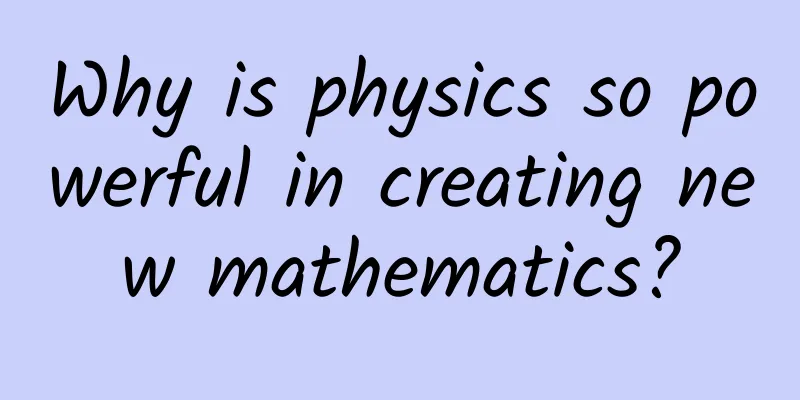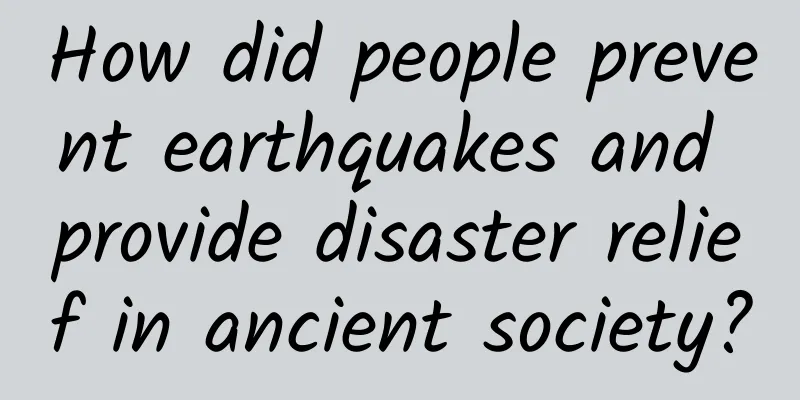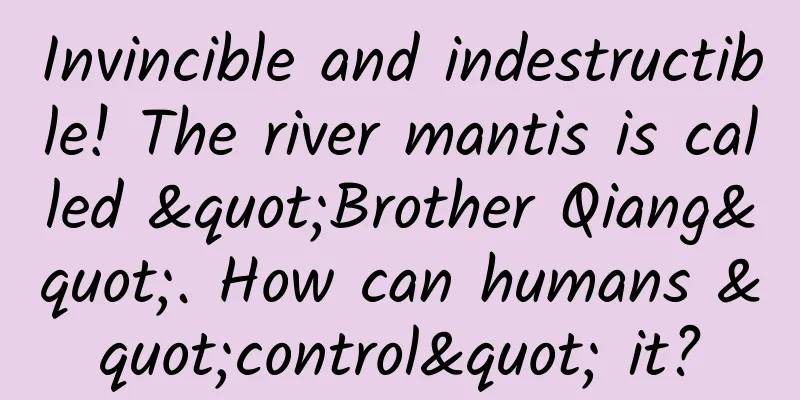Why is physics so powerful in creating new mathematics?

|
The development of physics in the 20th century benefited from the application of mathematical tools, but mathematics had been moving forward on its own. It was not until the second half of the 20th century that string theory directly promoted the development of mathematics. Mathematics and physics went hand in hand, just like returning to the early days of science. No one denies that mathematics can serve as the basis for the progress of physics, but conversely, why can physics also create new mathematics? The secret may be in the real world. Written by | Ananyo Bhattacharya Translation| 1/137 Image source: Tuchong Creative Mathematics has long been fundamental to progress in physics. In 1915, when Einstein discovered that more than half a century of pure mathematical work perfectly described the structure of space and time in his theory of gravity, he hailed general relativity as a “real triumph” of mathematics. He later marveled at how mathematics, conceived without any regard for application, could have been “so admirably adapted to real objects”[1]. Today, the use of mathematics in the service of physics is often taken for granted, rooted in its origins. Math, after all, was invented to measure, quantify, and understand the physical world. In Mesopotamia, the Sumerians developed a counting system, leaving behind clay tablets inscribed with multiplication tables. Their purpose? To count goods and possessions. Over the ensuing millennia, what began as a tool to lubricate the workings of government and commerce eventually took on a life of its own. Despite its expansion into realms so arcane and abstract that they can only be mastered after years of training, mathematics continues to underlie the greatest breakthroughs in physics. Lately, though, the tide has turned. Now, insights and intuitions from physics are unexpectedly leading to breakthroughs in mathematics. Having gone their own way for much of the 20th century, mathematicians are increasingly looking to the laws and patterns of nature for inspiration. Fields that have stagnated for decades are waiting to be reborn. Even philosophers are beginning to delve into why physics has proven to work “for no reason” in mathematics, as one philosopher boldly put it. The crux of the matter is that there are largely unappreciated, puzzling, and profound connections between the rules that govern the universe’s behavior and the most abstract musings of the human mind. Why does physics—rooted in understanding real things in the world, like apples and electrons—provide such effective clues to solving some of the toughest problems in mathematics, which involve intangibles like functions and equations? “Physicists are less concerned with rigorous proofs than mathematicians are,” says Timothy Gowers, a mathematician and Fields Medalist at the Collège de France. This sometimes “allows physicists to explore mathematical landscapes faster than mathematicians,” he says. If mathematicians tend to investigate small patches of the landscape in depth, physicists are more likely to skim quickly over large swaths of largely uncharted territory. In this way, physicists can stumble upon new and powerful mathematical concepts and connections, and mathematicians can circle back to them to try to prove (or disprove) them. The nutrients that physics provides to mathematics In fact, the process of physics inspiring mathematics is as old as science itself. The ancient Greek mathematician and inventor Archimedes described how the laws of mechanics inspired some of his most important mathematical discoveries. And Newton, along with his contemporary, the German polymath Gottfried Wilhelm Leibniz, developed a whole new kind of mathematics, calculus, while trying to understand the motion of falling objects. But in the middle of the 20th century, the flow of new mathematics from physics had all but dried up. Neither physicists nor mathematicians had much interest in what was happening on the other side. In the math world, an influential group of young French mathematicians, called the Bourbakis, sought to make math as precise as possible. They worked to rebuild the entire field from scratch, and published their collaborative work in the hope of spurring future mathematical discoveries. Meanwhile, physicists were excitedly developing groundbreaking ideas, such as the Standard Model, which remains physicists’ best theory of the atomic and subatomic world. For many of them, math was just a convenient tool, and they had no interest in the serious mathematical vision that the Bourbakis promoted. Yet a reconciliation is underway, led by the late Lebanese-British geometer Michael Atiyah, who, with a rare intuition and a bit of luck, often noticed areas of interest to later theoretical physicists. “In the mid-1970s, he came to believe that theoretical physics was by far the most promising source of new ideas,” Nigel Hitchin, a mathematician and professor emeritus at Oxford who worked with Atiyah, wrote in 2020. “From that point on, he became a facilitator of interaction between mathematicians and physicists, addressing the mathematical challenges posed by physicists, using ideas from physics to prove purely mathematical results, and providing physicists with modern mathematical content that he considered important but was unfamiliar to them.” One of Atiyah’s longtime collaborators is the mathematical physicist Edward Witten, whom he first met in 1977. Witten, more than 20 years younger than Atiyah, went on to become a pioneer of string theory, which posits that tiny, one-dimensional, vibrating strings are the fundamental building blocks of the universe, rather than the particles of the standard model. Initially hailed as a possible “theory of everything” that would unify quantum theory with Einstein’s theory of gravity, string theory has arguably had a greater impact on some of the most abstract areas of mathematics — such as algebraic geometry and differential topology — than on physics, where Witten and other string theorists have been able to formulate precise conjectures that mathematicians have only since proven. In 1991, for example, physicists Philip Candelas, Xenia de la Ossa, and their colleagues applied string theory to a decades-old puzzle in enumerative geometry, an ancient branch of mathematics devoted to counting the number of solutions to geometric problems. The simplest questions might be, “How many lines can pass through two points in a plane?” (1); or Apollonius’ famous question, “How many circles can be drawn that are tangent to three given circles?” (8). Candelas and his collaborators were able to use tools from string theory to solve a particularly thorny problem in enumerable geometry: counting the number of a particular type of curve in Calabi-Yau manifolds, the strange six-dimensional shapes at the heart of string theory. Their result connects two geometries, “symplectic” and “complex,” that mathematicians had studied in isolation for decades, thinking they were unrelated. This kind of advance — connecting two fields thought to be unrelated — is considered a “deep” result in mathematics: You can suddenly use tools from one field to solve problems in another, pushing and accelerating progress in mathematics. Tough problem: Physicist Philippe Candelas and collaborators used tools from string theory to solve a thorny problem in enumerable geometry: counting the number of certain kinds of curves in a Calabi-Yau manifold (pictured). These strange six-dimensional shapes are at the heart of string theory. 丨Image source: Wikimedia Commons Just a few years later, in 1995, Witten proposed five different versions of string theory, each requiring 10 dimensions, as different aspects of a single 11-dimensional conceptualization he called “M-theory.” Although M-theory remains unproven, mapping the correspondences between different theories has led to astonishing mathematical discoveries. “It feels like every month string theory is providing new structures for mathematicians in ways that have never been seen before,” says Yang-Hui He, a mathematical physicist at the Institute of Mathematical Sciences in London. String theory is a rich source of unexpected relationships, or “duality,” between two mathematical worlds that still excites mathematicians today. While studying the simplest type of Calabi-Yau manifold, a K3 surface, He and his collaborator, string theorist Federico Carta, also of the London Institute, stumbled upon the relationship between the surface’s “homotopy group,” used in topology to classify shapes, and a symmetry group called Mathieu 24. Their discovery revealed an unexpected connection between two different areas of pure mathematics — topology, the study of shapes, and an area of modern algebra called group theory, which deals with the types of symmetries that objects have. Why physics produces such interesting mathematics is a "deep question," He said. There are countless patterns and structures for mathematicians to study, "but the ones that come from reality are the ones that we have some degree of intuition about." Hitchin agreed. "Mathematical research doesn't happen in a vacuum," he said. "You can't invent a new theory for the sake of inventing it. You need to believe there's something out there that needs to be investigated. New ideas have to be centered around some idea of reality, or maybe someone's idea." This raises the question of whether physics nourishes mathematics simply by providing a stronger incentive to explore and a focus for mathematicians’ energies. Guided by intuitions about how the world should work and plausible endpoints, mathematicians can sometimes make faster progress on a problem than they would otherwise. It could also explain a curious fact: “bad” physics can sometimes lead to good mathematics. For example, vortex theory was an early attempt by the British mathematical physicist William Thomson, aka Lord Kelvin, to explain why there were relatively few kinds of atoms. He imagined atoms as spinning rings that could be tied into intricate knots, each corresponding to a different chemical element. After the discovery of the electron, the theory was abandoned—but its mathematics led to the development of knot theory. Knot theory has since become fertile ground for exploration by pure mathematicians, and has found surprising applications in fluid dynamics and understanding tangled molecules like DNA. Is the universe made of mathematics? For Atiyah, the mysterious relationship between physics and math all comes down to the human brain. “Humans are the product of a long evolution in which having a powerful brain was an advantage. Such brains evolved in the physical world, and so evolutionary success was measured by physiological success,” he explained in a 2018 interview. “So the human brain evolved to solve physics problems, which requires the brain to develop the right math.” To do this, the brain must also adapt to recognize and appreciate mathematical patterns in nature. Atiyah even collaborated on a 2014 brain-imaging study that concluded that the experience of mathematical beauty stimulates the same parts of the brain as beautiful music, art, or poetry. This may explain why physics can be a guiding light for mathematicians: the kind of math that emerges from studying reality is often the kind our brains prefer. In 2010, in a paper co-authored with Hitchin and Dutch theoretical physicist Robbert Dijkgraaf, then at Princeton University, Atiyah further highlighted the successful application of physics to mathematics. However, since then, little work has been done to try to understand this phenomenon. One of the philosophers who recently revisited this question is Daniele Molinini of the University of Bologna. In his 2023 paper in The British Journal for the Philosophy of Science[3], he responded to an oft-cited 1960 article by the Nobel Prize winner in physics Eugene Wigner, “The Unreasonable Effectiveness of Mathematics in the Natural Sciences.” Molinini’s blunt response, however, is to explore “The Unreasonable Effectiveness of Physics in Mathematics.” His surprising answer is that some physical laws may be as indisputable as mathematical theorems. “We have to take as fundamental some principles about the real world,” he said. Philosophers generally agree that mathematical truths are a "necessity" because they must be true in all possible worlds. With natural truths, empirical facts, it's different - they depend on the situation. Light travels at a constant speed, but arguably in a different universe it might not be. That is, mathematical truths are and will be true no matter what. Are there certain laws of physics that are "inevitable" in the same way? In his paper, Molinini suggests that a conservation law might be one such law. In physics, some properties of a system, such as energy or momentum, don't change. For example, a cyclist gliding down a hill converts her gravitational potential energy into kinetic energy, but the total energy she and her bike have remains the same. If this conservation is a "necessary product," Molinini argues, it might explain why Archimedes was able to successfully deduce the truth of a geometric proof from his mechanical thinking, a feat that would otherwise be difficult to explain. In this case, physics and mathematics are two sides of the same coin: both are correct because they follow the same basic principles. Another view, famously expressed by Galileo in the early 17th century and often championed by mathematicians, is that the universe is written in the language of mathematics. This idea has ancient origins, dating back at least to Pythagoras and his followers, but a more recent and extreme version is Max Tegmark's mathematical universe hypothesis - the idea that the universe itself is not only described by mathematics, but is made of mathematics. In Tegmark’s account, our universe is just one of countless parallel universes, and all the infinite possibilities of mathematics—every theorem, every proof—are realized somewhere in this multiverse. It’s no wonder that physics inspires new discoveries in mathematics—the reality that physics describes is, after all, mathematical. “There’s a close connection between empirical science and mathematics,” says Mark Colyvan, a philosopher at the University of Sydney who studies the relationship between mathematics and physics. “One conclusion we can draw is that, somehow, the world itself is mathematics.” Yet, in both formulations, the mathematics that arises from physics should be extraordinarily rich. But the mathematics that arises from known physics is only a tiny fraction of all mathematics (and almost all of it is probably not that interesting). The idea that the universe is made entirely of mathematics does not explain this. Molinini is challenging a popular philosophical account of the applicability of mathematics, called “mapping”[4], which he argues fails to explain why good mathematics can emerge from physics. Mapping theory holds that by translating physical concepts (such as mass or separation) into mathematical objects, such as the equations for Newton’s law of gravity, one can use it to calculate something, and then map it back to a physical property—the attraction between two objects. But Molinini argues that the mapping process breaks down when one tries to invert it to explain how mathematics emerged from physics. He said there is growing interest in this question among philosophers, who have been focusing on the inverse question of why mathematics can be applied to empirical science: why empirical science can give rise to mathematics. "Modern physics has provided mathematicians with a whole host of new tools and unexpected clues," He said. "In the future, physics and mathematics will need to work more closely together to solve some of the biggest problems in pure mathematics." He said that one such field is the Langlands program, conceived by Robert Langlands in the 1960s, which is often referred to as the "grand unified theory of mathematics." One branch of the program, the geometric Langlands program, was recently solved by a team of mathematicians, who proposed a proof that spanned five papers and 800 pages (Editor's note: See "The vision of the grand unification of mathematics that emerged in prison is a big step closer to realization"). The core of the proof is based on insights originally drawn from conformal field theory, a branch of physics that is the cornerstone of string theory and other fields. He Yanghui believes that mathematicians need to draw on more physics to explore the implications of the proof and make progress in other aspects of the Langlands program. Similarly, mathematicians have used physics to try to make progress on the Riemann hypothesis and the Birch and Swinnerton-Dyer conjecture, two of the most challenging open problems in mathematics. He feels that the combination of the two fields will be the key to finally solving these grand questions. “Physics and mathematics are starting to merge again, just as they did in the days of Newton and Gauss,” said He, who was trained as a theoretical physicist but increasingly sought to apply physical ideas to purely mathematical problems. It’s a fascinating idea. The story of the universe can be written in the language of mathematics. But as beautiful as the story seems, there are signs that understanding more than physicists already understand will require increasingly exotic and complex mathematical tools, some of which have yet to be invented. Breaking down the barriers between the two fields could open up new worlds of understanding for both sides. About the Author Ananyo Bhattacharya is currently Chief Science Writer at the Institute of Mathematical Sciences in London. Prior to his career in journalism, Ananyo worked as a medical researcher at the Burnham Institute in San Diego, California. He has a degree in physics from Oxford University and a PhD in protein crystallography from Imperial College London. He has worked as a senior editor at Nature, Chemistry World and Research Fortnight, and as a science reporter at The Economist. He is the author of The Man from the Future, a biography of John von Neumann. The cover image and images within this article are from the copyright gallery. Any reproduction or use may lead to copyright disputes. Special Tips 1. Go to the "Featured Column" at the bottom of the menu of the "Fanpu" WeChat public account to read a series of popular science articles on different topics. 2. Fanpu provides a function to search articles by month. Follow the official account and reply with the four-digit year + month, such as "1903", to get the article index for March 2019, and so on. Copyright statement: Personal forwarding is welcome. Any form of media or organization is not allowed to reprint or excerpt without authorization. For reprint authorization, please contact the backstage of the "Fanpu" WeChat public account. |
<<: Ah? Music can actually heal injuries!
>>: Is the Pacific Ocean getting fresher and the Atlantic Ocean getting saltier? | Expo Daily
Recommend
Entering the "deep earth" and seeking technological breakthroughs are the key
On the morning of July 20, the first 10,000-meter...
Honda's global electrification business will accelerate in 2024 ~ Electrification business initiatives and investment strategies
On May 16, 2024, Honda held a press conference ma...
How to play with short videos in information flow? 5 ideas + 3 case references!
Advertising has been evolving, have your marketin...
Huainan SEO Training: What should SEO novices know? Is it difficult to do SEO well?
The existence of SEO optimization positions means...
Tencent Advertising Account Opening Standards and Requirements: Open Industry for Individual Advertisers!
Open industry for individual advertisers (I) Entr...
Programming languages: tools to transform entrepreneurial thinking
[[131849]] On April 3, MIT Technology Review publ...
Birthday wishes in Africa, how much does it cost for African children to shout birthday wishes?
African birthday greeting slogans Let your blessi...
2.6 million years ago, the Earth was much hotter than it is now
Produced by: Science Popularization China Author:...
Global warming: A detailed explanation of the 2021 Physics Nobel Prize for complex stochastic systems
According to the official website of the Nobel Pr...
[Chasing Dreams with Stars] Min Enze: Turning stones into gold, a catalyst for life that never fades
Min Enze is the founder of my country's oil r...
A ghost in the water and a flower ended the two thousand years of atomic debate
Author: Tian Dawei Atoms: Fantasy or Reality? Nuc...
Will be listed as a possible carcinogen. Are the harmful effects of aspartame exaggerated?
Aspartame is one of the most well-known sugar sub...
Looking at the decline of Japan's television industry, can China become the next South Korea?
China has always had an awkward position in the g...
What exactly is tax evasion?
This article was first published by Hunzhi (WeCha...
How does an information flow optimizer who earns 20,000 yuan a month manage an account?
Today's content is a bit dry and a bit long, ...









